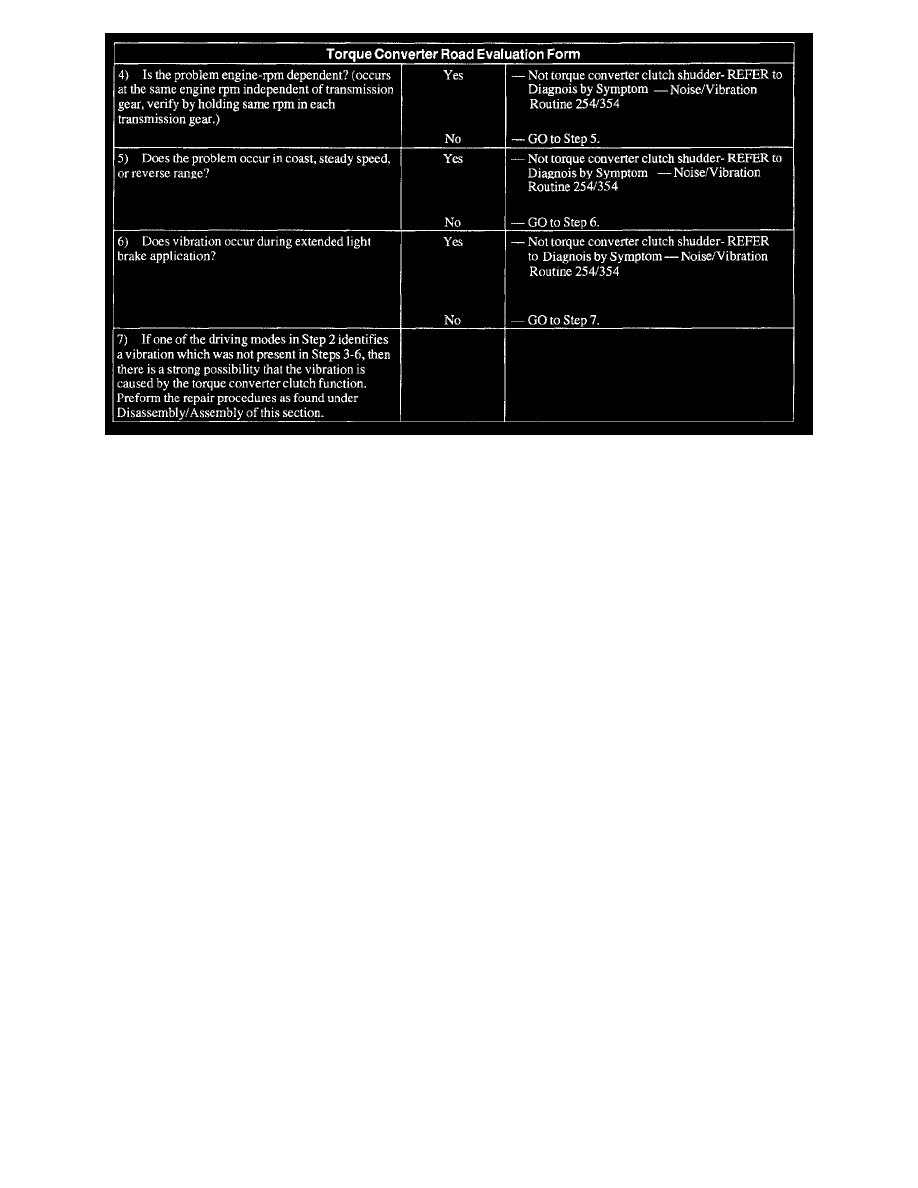Econoline E350 1 Ton V8-5.4L CNG VIN M (1999)

Torque Converter Road Evaluation Form - 2 Of 2
This test verifies that the torque converter clutch control system and the torque converter are operating properly.
1. Perform Quick Test. Check for DTCs; refer to the Diagnostic Trouble Code Chart.
2. Connect a tachometer to the engine.
3. Bring the engine to normal operating temperature by driving the vehicle at highway speeds for approximately 15 minutes in (D) position.
4. After normal operating temperature is reached, maintain a constant vehicle speed of about 80 km/h (50 mph) and tap brake pedal with the left foot.
5. Engine rpm should increase when brake pedal is tapped, and decrease about five seconds after pedal is released. If this does not occur, refer to
Torque Converter Clutch Operation Concerns in the Diagnosis by Symptom Index.
6. If the vehicle stalls in (D) or manual 2 at idle with vehicle at a stop, move the transmission range selector lever to manual 1 position. If the vehicle
stalls, refer to Torque Converter Clutch Operation Concerns in the Diagnosis by Symptom Index. Repair as required. If the vehicle does not stall in
(D), refer to Diagnosis by Symptom.
7. If the vehicle exhibits a vibration during the road test complete the Road Test Evaluation Form. This form will aid the technician in determining
the source of the vibration.
NOTE: The following is a list of common vehicle concerns that have been misdiagnosed as tongue converter clutch shudder.
a. spark plugs - check for cracks, high resistance or broken insulators
b. plug wires
c. fuel injector - filter may be plugged
d. fuel contamination - poor engine performance
e. EGR valve - valve may let in too much exhaust gas and cause engine to run lean
f.
vacuum leak - engine will not get proper air/fuel mixture
g. MAP/MAF sensor - improper air/fuel mixture
h. HO2S sensor - too rich/lean air/fuel mixture
i.
fuel pressure - may be too low
j.
engine mounts -loose/damaged mounts can cause vibration concerns
k. axle joints - check for vibration
Torque Converter Diagnosis
Prior to torque converter replacement, all diagnostic procedures must be followed. This is to prevent the unnecessary replacement of good torque
converters. Only after a complete diagnostic evaluation can the decision be made to replace the torque converter.
Begin with the normal diagnostic procedures as follows:
1. Preliminary Inspection.
2. Know and Understand the Customer's Concern.
3. Verify the Concern-Perform the Torque Converter Clutch Operation Test.
4. Perform Diagnostic Procedures.
^
Run on-board diagnostics.
-
Repair all non-transmission related DTCs first.
-
Repair all transmission DTCs.
